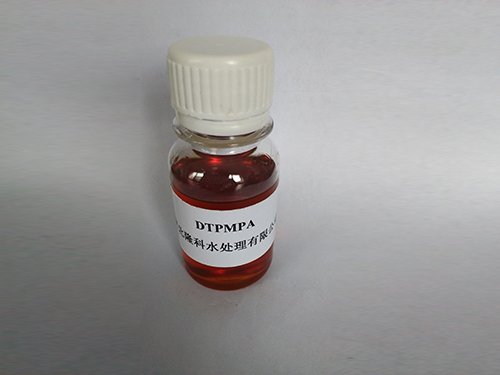ethylene diamine tetra methylene phosphonic acid
Ethylene Diamine Tetra Methylene Phosphonic Acid An Overview
Ethylene diamine tetra methylene phosphonic acid (EDTMPA) is a highly effective chelating agent that has garnered considerable attention in both industrial and biomedical applications. This compound, which belongs to a class of phosphonic acids, is characterized by its ability to form stable complexes with metal ions, making it indispensable in various fields, including water treatment, agriculture, and even pharmaceuticals.
Chemical Structure and Properties
EDTMPA is defined by its unique molecular structure, featuring four methylene phosphonic acid groups attached to an ethylene diamine backbone. This arrangement allows it to form multiple coordination bonds with metal ions, effectively sequestering them. The chelation ability of EDTMPA is attributed to the presence of phosphonate groups, which offer strong bonds with various divalent and trivalent metal ions, enhancing the stability of complexes formed.
One of the noteworthy properties of EDTMPA is its high solubility in water, which further amplifies its utility in various applications. Its stable, non-toxic nature makes it favorable in sectors where safety is paramount, such as in drug formulation or agronomy.
Applications in Water Treatment
One of the most significant applications of EDTMPA is in the field of water treatment. Its exceptional chelating capacity allows it to effectively remove heavy metals such as lead, cadmium, and mercury from contaminated water sources. By binding to these toxic metals, EDTMPA prevents them from interacting with living organisms, thus rendering water safer for consumption and use.
In addition, it is employed in industrial water systems to inhibit scale formation and corrosion
. The treatment of cooling water systems with EDTMPA ensures that metal ions do not precipitate and form undesirable deposits, thereby extending the lifecycle of equipment and reducing maintenance costs.Role in Agriculture
ethylene diamine tetra methylene phosphonic acid

In agriculture, EDTMPA is used to enhance nutrient uptake in crops. The chelating properties allow it to bind essential micronutrients such as iron, zinc, and manganese, facilitating their availability to plants. This is particularly beneficial in alkaline soils, where these nutrients often become insoluble and difficult for plants to absorb. By utilizing EDTMPA, agricultural practices can promote healthier plant growth and improve crop yields, ultimately contributing to food security.
Furthermore, the use of EDTMPA in fertilizers can lead to the development of more efficient nutrient delivery systems. This not only reduces the amount of fertilizer required but also minimizes the environmental impact associated with over-fertilization.
Biomedical Applications
The biomedical field has also recognized the potential of EDTMPA, particularly in drug delivery systems and diagnosis. The ability of EDTMPA to chelate metal ions is being explored for its role in developing targeted drug delivery mechanisms. For instance, it may be used to create complexes with therapeutic agents that target specific cells in the body, allowing for localized treatment with reduced side effects.
Moreover, EDTMPA’s chelating properties are being examined in the context of radiopharmaceuticals. Its ability to bind to radioactive metal ions facilitates the creation of radiotracers that can be utilized in medical imaging, providing valuable insights into physiological processes and aiding in the diagnosis of various conditions.
Environmental Considerations
While EDTMPA presents numerous benefits in various applications, it is vital to consider its environmental implications. Being a synthetic compound, its degradation and persistence in ecosystems warrant attention. Research is ongoing to evaluate its biodegradability and potential accumulation in the environment. As with any chemical substance, responsible management and adherence to regulations are crucial to minimize negative impacts.
Conclusion
Ethylene diamine tetra methylene phosphonic acid (EDTMPA) stands out as a versatile compound with a wide range of applications across multiple sectors. From water treatment to agriculture and biomedicine, its chelating properties offer innovative solutions to some of the pressing challenges faced in these fields. As research continues and new applications are discovered, EDTMPA’s role is expected to expand, making it a vital component in modern science and industry.
-
Water Treatment with Flocculant Water TreatmentNewsJun.12,2025
-
Polymaleic AnhydrideNewsJun.12,2025
-
Polyaspartic AcidNewsJun.12,2025
-
Enhance Industrial Processes with IsothiazolinonesNewsJun.12,2025
-
Enhance Industrial Processes with PBTCA SolutionsNewsJun.12,2025
-
Dodecyldimethylbenzylammonium Chloride SolutionsNewsJun.12,2025





